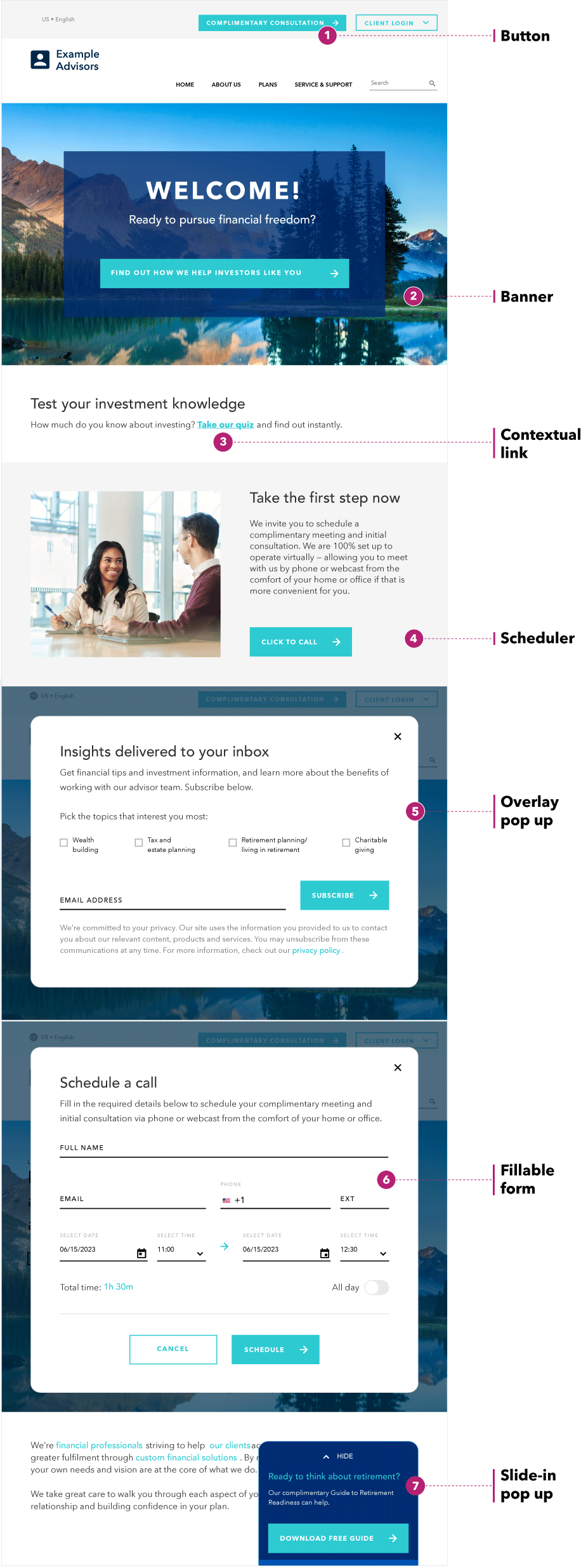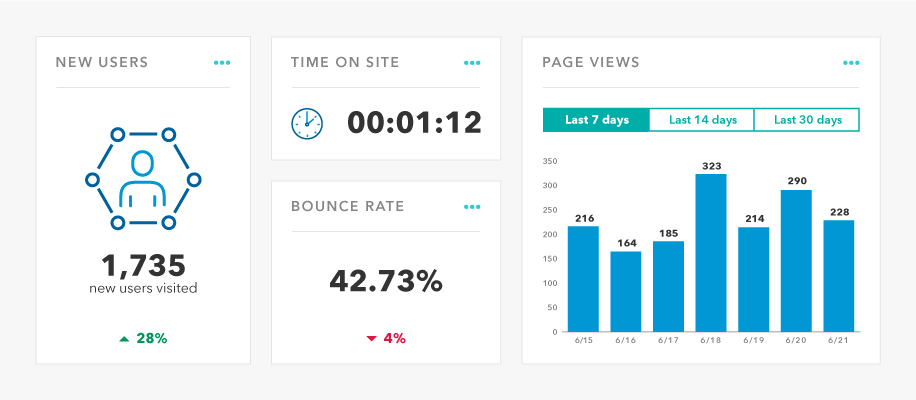It doesn’t take a digital marketing whiz to understand the importance of having a website. In today’s world of online comparison shopping, consumer research and validation, it’s all but impossible for a financial advisor’s practice to thrive without one.
A website can be a digital billboard for your business, helping you establish your brand and communicate with clients more efficiently. Perhaps most importantly, a website can create an experience that inspires prospective clients to take the next step and request a meeting with you.
There’s a difference, however, between having a website and using your website to drive investor interest and online leads. A website that is used to its maximum potential — with a strong brand message that speaks to an ideal client and anticipates their specific needs — is more likely to bring qualified prospects to your practice.
How can you tell if your website is reaching its potential? Start by looking at it from the point of view of a new user: Is your messaging clear? Is there a clear journey to get to the information you want them to act on? You might also consider user testing, which could be outsourced to a professional or done by unbiased volunteers among friends and family. Ask them what types of questions they would expect to find answers to on your site. How easily do they find answers? Do they understand what you do and whom you serve? Most importantly, would they be inclined to schedule an initial meeting?
Regardless of where your website stands today, here are five strategies that can help drive digital business to your practice.




